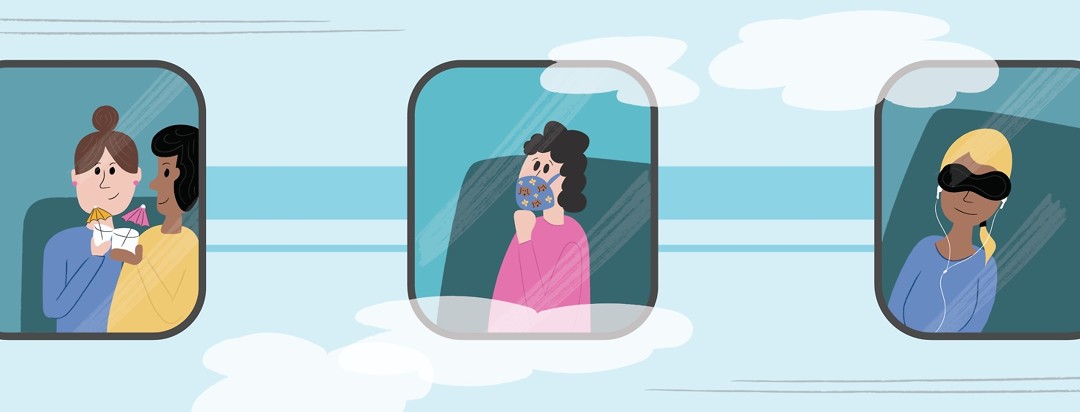Beneath the Mask
I recently took my first trip since my diagnosis a year and a half ago. I flew from Minnesota to Texas to visit my daughters at college. As much as I wanted to see my girls, it wasn’t an easy decision to fly. My auto transplant was just over a year ago, and I still struggle with considerable fatigue and a weakened immune system.
My mask makes me stand out when I want to blend in
I’ve been carrying around my puppy-themed Vogmask since after my transplant, and I’ve rarely worn it. I want to avoid infections, but I also don’t like to stand out. I’m a social introvert that loves people but equally wants to blend in. Since my transplant, I’ve braved large retail stores and waiting rooms without it and, knock on wood, still haven’t had any infections. Even during my transplant, I rarely wore a mask for more than an hour at a time, so I couldn’t imagine wearing one through two airports and four flights.
I wasn’t prepared to try my luck on this trip, however. If I picked up a bug on the flight there, I may not get to enjoy the visit with my daughters. I felt especially vulnerable after just reading that MM patients have an increased risk of infections.1 Coupled with the infectious potential of a single cough or sneeze, I was finding it hard to relax.
Advice from a myeloma friend: Overthink less, enjoy more
I expressed my anxious feelings to a friend, also living with myeloma. She doesn’t wear a mask when she flies, as she prefers to enjoy her travels fully. She encouraged me, masked or unmasked, to overthink a little less and enjoy the adventure a lot more.
I put on my mask as soon as I got through security. It felt oddly comforting as I remembered all the daily hospital visits after my transplant, surrounded by other mask wearers. Our masks became a common thread of camaraderie and togetherness at the Hope Lodge, transplant house, and on oncology floors. With our colorful, patterned masks on, we expressed our individuality yet commonality of an unspoken language of suffering and hope for survival that all those living under a cancer mask seem to understand.
I found this familiarity and solidarity notably lacking in airports and on flights, however. People sitting next to me didn’t ask or talk or even look. The couple across the aisle enjoyed their gin and tonics, seemingly indifferent to the disguised dog-faced lady who now, out of sheer envy, regretted giving up her window seat so they could sit together and hold hands as they began their vacation.
The woman underneath the mask
What they couldn’t see was that beneath the mask was a woman who, just a few short years ago, was also in love, drinking cocktails in anticipation of romantic getaways, unmasked and unencumbered. Beneath the decorated fabric was now a social ex-teacher who wanted to be having conversations and comparing destinations — and a mother, traveling to make memories with her daughters while she still could, silently praying that the mask would ensure it would happen.
It hasn’t even been two years, and I’m not even fifty. It seems like a lifetime ago that I had a lifetime ahead of me. I feel that I have mostly accepted my diagnosis and feel especially blessed for the new lease on life it has granted me — a life with renewed meaning, intention and purpose. I am grateful for the amazing people I’ve met, the medications keeping me alive, and for my mask protecting my fragile immune system.
Embracing this new adventure, including the vulnerability
But I wouldn’t be honest if I didn’t acknowledge that wearing the mask has left me feeling vulnerable to more than just pathogens. I didn’t expect the depth at which I found myself yearning for the freedom of pre-cancer days and wanting my carefree, neutrophil-rich, chemo-free, cocktail-drinking, mask-free life back -- even if just for a single flight.
I may not always enjoy this new adventure, but I can choose to embrace it. It’s entirely possible to appreciate memories of the past while honoring feelings of fear in the moment and remaining hopeful toward the future. Even under the tightest-fitting mask.

Join the conversation